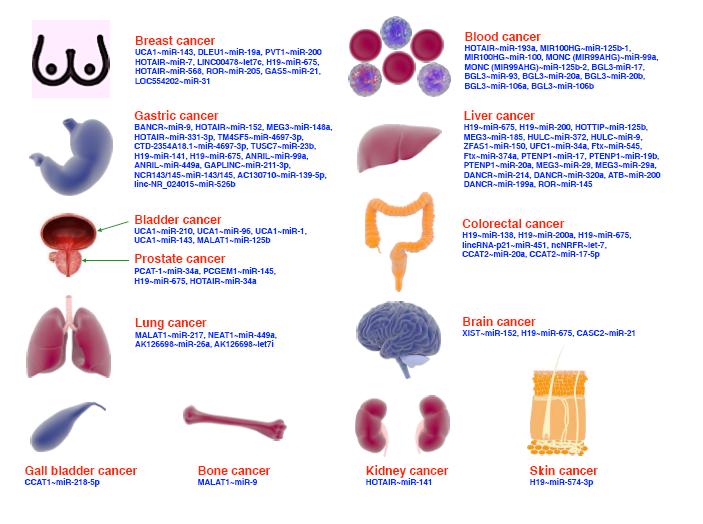| 1. |
GBD 2019 Stroke Collaborators. Global, regional, and national burden of stroke and its risk factors, 1990-2019: a systematic analysis for the global burden of disease study 2019. Lancet Neurol, 2021, 20(10): 795-820.
|
| 2. |
Roy P, Orecchioni M, Ley K. How the immune system shapes atherosclerosis: roles of innate and adaptive immunity. Nat Rev Immunol, 2022, 22(4): 251-265.
|
| 3. |
Abdolmaleki F, Gheibi Hayat SM, Bianconi V, et al. Atherosclerosis and immunity: a perspective. Trends Cardiovasc Med, 2019, 29(6): 363-371.
|
| 4. |
Kong P, Cui ZY, Huang XF, et al. Inflammation and atherosclerosis: signaling pathways and therapeutic intervention. Signal Transduct Target Ther, 2022, 7(1): 131.
|
| 5. |
Wolf D, Ley K. Immunity and inflammation in atherosclerosis. Circ Res, 2019, 124(2): 315-327.
|
| 6. |
Gaggini M, Gorini F, Vassalle C. Lipids in atherosclerosis: pathophysiology and the role of calculated lipid indices in assessing cardiovascular risk in patients with hyperlipidemia. Int J Mol Sci, 2022, 24(1): 75.
|
| 7. |
Duell PB. Triglyceride-rich lipoproteins and atherosclerotic cardiovascular disease risk. J Am Coll Cardiol, 2023, 81(2): 153-155.
|
| 8. |
Vasan RS, Pan S, Larson MG, et al. Arteriosclerosis, atherosclerosis, and cardiovascular health: joint relations to the incidence of cardiovascular disease. Hypertension, 2021, 78(5): 1232-1240.
|
| 9. |
Kanellis J, Watanabe S, Li JH, et al. Uric acid stimulates monocyte chemoattractant protein-1 production in vascular smooth muscle cells via mitogen-activated protein kinase and cyclooxygenase-2. Hypertension, 2003, 41(6): 1287-1293.
|
| 10. |
Zhou Y, Dan H, Bai L, et al. Nonlinear relationship with saturation effect observed between neutrophil to high-density lipoprotein cholesterol ratio and atherosclerosis in a health examination population: a cross-sectional study. BMC Cardiovasc Disord, 2022, 22(1): 424.
|
| 11. |
Marques LR, Diniz TA, Antunes BM, et al. Reverse cholesterol transport: molecular mechanisms and the non-medical approach to enhance HDL cholesterol. Front Physiol, 2018, 9: 526.
|
| 12. |
Tran-Dinh A, Diallo D, Delbosc S, et al. HDL and endothelial protection. Br J Pharmacol, 2013, 169(3): 493-511.
|
| 13. |
Ganjali S, Momtazi AA, Banach M, et al. HDL abnormalities in familial hypercholesterolemia: focus on biological functions. Prog Lipid Res, 2017, 67: 16-26.
|
| 14. |
邱文辉, 闫新华, 柳培培, 等. 血清尿酸与高密度脂蛋白胆固醇比值与新发动脉粥样硬化性心血管疾病的关系. 中华高血压杂志(中英文), 2025, 33(1): 47-58.
|
| 15. |
Li F, Zhao D, Li Q, et al. Uric acid to high-density lipoprotein cholesterol ratio is a novel marker to predict functionally significant coronary artery stenosis. J Interv Cardiol, 2022, 2022: 9057832.
|
| 16. |
Aktas G, Kocak MZ, Bilgin S, et al. Uric acid to HDL cholesterol ratio is a strong predictor of diabetic control in men with type 2 diabetes mellitus. Aging Male, 2020, 23(5): 1098-1102.
|
| 17. |
Kocak MZ, Aktas G, Erkus E, et al. Serum uric acid to HDL-cholesterol ratio is a strong predictor of metabolic syndrome in type 2 diabetes mellitus. Rev Assoc Med Bras (1992), 2019, 65(1): 9-15.
|
| 18. |
Yazdi F, Baghaei MH, Baniasad A, et al. Investigating the relationship between serum uric acid to high-density lipoprotein ratio and metabolic syndrome. Endocrinol Diabetes Metab, 2022, 5(1): e00311.
|
| 19. |
朱海伟, 梁琳琅. 血清尿酸/高密度脂蛋白胆固醇比值与桥本甲状腺炎的相关性. 中国临床研究, 2023, 36(3): 441-444.
|
| 20. |
李新, 田晨光, 张真真, 等. 血尿酸/高密度脂蛋白胆固醇比值与糖尿病肾病及颈动脉粥样硬化斑块的相关性研究. 医学研究杂志, 2023, 52(10): 112-116.
|
| 21. |
中华医学会神经病学分会, 中华医学会神经病学分会脑血管病学组. 中国各类主要脑血管病诊断要点 2019. 中华神经科杂志, 2019, 52(9): 710-715.
|
| 22. |
中国卒中学会科学声明专家组. 症状性颅内外动脉粥样硬化性大动脉狭窄管理规范——中国卒中学会科学声明. 中国卒中杂志, 2017, 12(1): 64-71.
|
| 23. |
Shen SW, Lu Y, Li F, et al. Atherogenic index of plasma is an effective index for estimating abdominal obesity. Lipids Health Dis, 2018, 17(1): 11.
|
| 24. |
Prognosis of patients with symptomatic vertebral or basilar artery stenosis. The warfarin-aspirin symptomatic intracranial disease (WASID) study group. Stroke, 1998, 29(7): 1389-1392.
|
| 25. |
《中国卒中中心报告 2022》编写组. 《中国卒中中心报告 2022》概要. 中国脑血管病杂志, 2024, 21(8): 565-576.
|
| 26. |
《中国脑卒中防治报告 2020》编写组. 《中国脑卒中防治报告 2020》概要. 中国脑血管病杂志, 2021, 18(11): 737-743.
|
| 27. |
王磊, 李文霞. 颅内动脉粥样硬化性狭窄程度与缺血性脑卒中复发相关性研究. 中国医药科学, 2020, 10(6): 235-238.
|
| 28. |
Liu W, Yu W, Xie D, et al. High uric acidpromotes atherosclerotic plaque instability by apoptosis targeted autophagy. J Atheroscler Thromb, 2023, 30(9): 1176-1186.
|
| 29. |
Borghi C, Agnoletti D, Cicero AFG, et al. Uric acid and hypertension: a review of evidence and future perspectives for the management of cardiovascular risk. Hypertension, 2022, 79(9): 1927-1936.
|
| 30. |
Su H, Liu T, Li Y, et al. Serum uric acid and its change with the risk of type 2 diabetes: a prospective study in China. Prim Care Diabetes, 2021, 15(6): 1002-1006.
|
| 31. |
Copur S, Demiray A, Kanbay M. Uric acid in metabolic syndrome: does uric acid have a definitive role?. Eur J Intern Med, 2022, 103: 4-12.
|
| 32. |
Kim SY, Guevara JP, Kim KM, et al. Hyperuricemia and risk of stroke: a systematic review and meta-analysis. Arthritis Rheum, 2009, 61(7): 885-892.
|
| 33. |
汤群英, 于建刚, 徐红. 血清尿酸水平与老年脑梗死患者颅内外动脉粥样硬化性狭窄的关系研究. 实用心脑肺血管病杂志, 2020, 28(4): 34-37.
|
| 34. |
Cicero AFG, Fogacci F, Giovannini M, et al. Serum uric acid predicts incident metabolic syndrome in the elderly in an analysis of the Brisighella heart study. Sci Rep, 2018, 8(1): 11529.
|
| 35. |
张雪晴, 陈树春. 血尿酸与高密度脂蛋白胆固醇比值在糖脂代谢相关疾病中的研究进展. 临床荟萃, 2022, 37(11): 1044-1047.
|
| 36. |
韦广明. 脑梗死患者血清 Hcy、UA 与头颈部血管动脉粥样硬化及狭窄的相关性. 中西医结合心血管病电子杂志, 2020, 8(13): 25-26.
|
| 37. |
Rohatgi A, Westerterp M, von Eckardstein A, et al. HDL in the 21st century: a multifunctional roadmap for future HDL research. Circulation, 2021, 143(23): 2293-2309.
|
| 38. |
林雪琪, 吴迎春. 高密度脂蛋白胆固醇与症状性颅内动脉粥样硬化性狭窄患者脑组织低灌注的相关性研究. 神经损伤与功能重建, 2024, 19(6): 343-348.
|
| 39. |
Feingold KR, Grunfeld C. Effect of inflammation on HDL structure and function. Curr Opin Lipidol, 2016, 27(5): 521-530.
|
| 40. |
van der Stoep M, Korporaal SJ, Van Eck M. High-density lipoprotein as a modulator of platelet and coagulation responses. Cardiovasc Res, 2014, 103(3): 362-371.
|
| 41. |
赵靖宇. 血尿酸与高密度脂蛋白胆固醇比值在急性脑梗死及卒中后认知障碍中的相关研究. 河北唐山: 华北理工大学, 2023.
|
| 42. |
Krasteva MP, Lau KK, Mordasini P, et al. Intracranial atherosclerotic stenoses: pathophysiology, epidemiology, risk factors and current therapy options. Adv Ther, 2020, 37(5): 1829-1865.
|
| 43. |
Xu Y, Dong H, Zhang B, et al. Association between dyslipidaemia and the risk of hyperuricaemia: a six-year longitudinal cohort study of elderly individuals in China. Ann Med, 2022, 54(1): 2402-2410.
|
| 44. |
Scanu A, Luisetto R, Oliviero F, et al. High-density lipoproteins inhibit urate crystal-induced inflammation in mice. Ann Rheum Dis, 2015, 74(3): 587-594.
|




